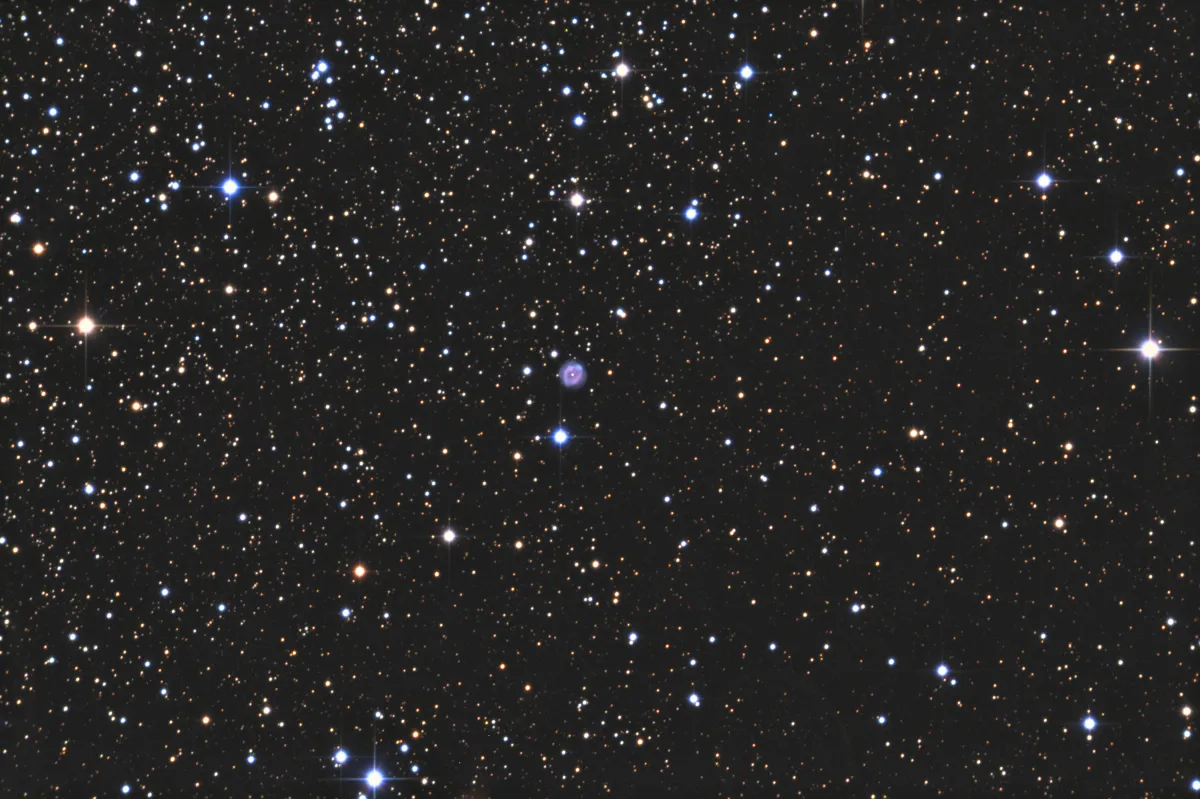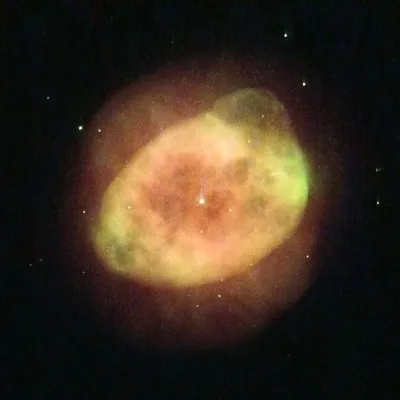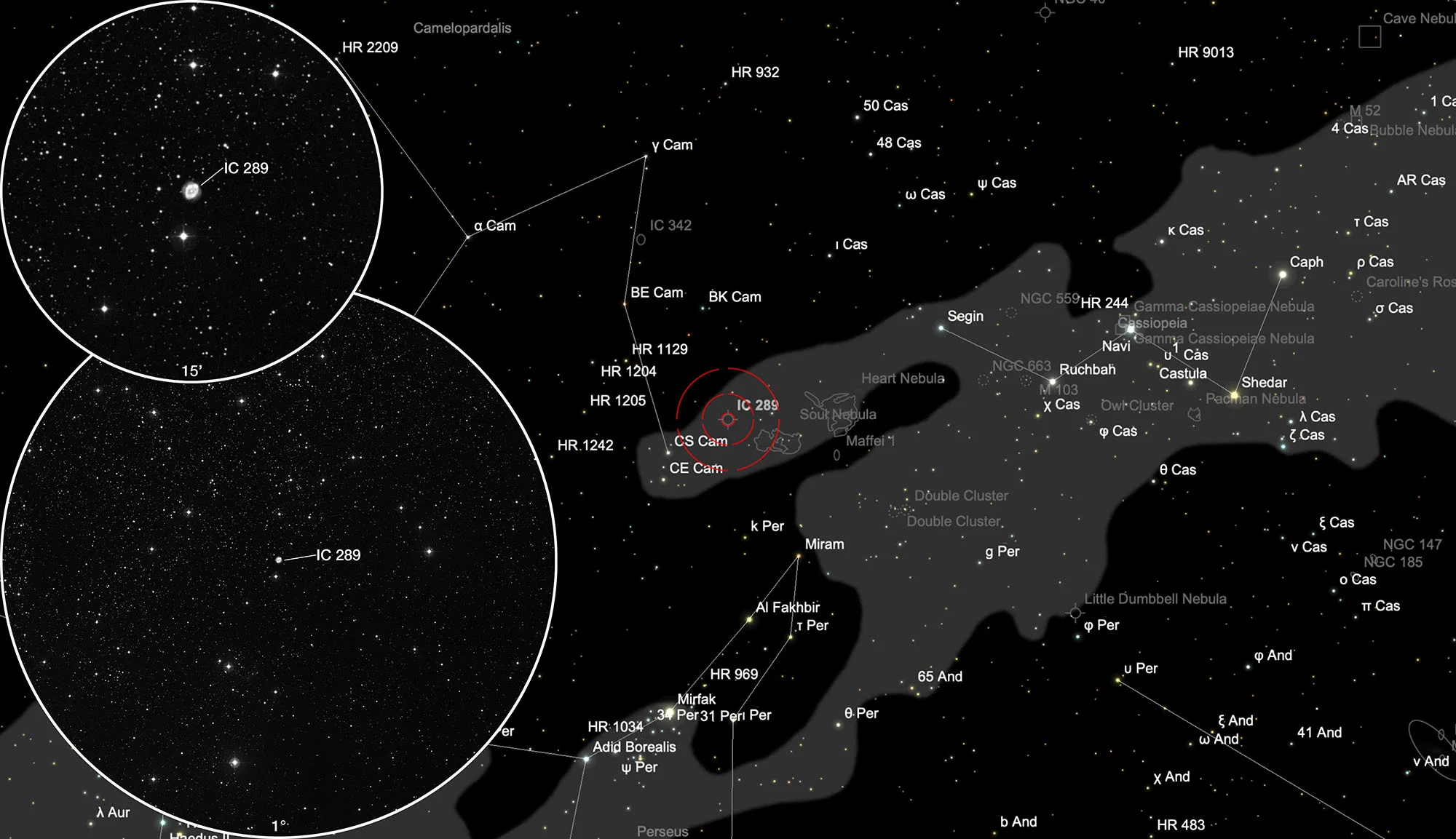Planetary Nebula IC 289

Object Description
The planetary nebula IC 289 was discovered on 2 September 1888 by the American astronomer Lewis Swift with a 16 inch reflector telescope. He described it as «fairly bright, fairly large, round, between two very faint stars». [277, 314] In 1921 Edwin Hubble identified the nebula as a planetary nebula. [416]

The visual appearance resembles a somewhat irregular ring with dimensions 38x28 arcseconds and a position angle of 142°, which is surrounded by a weaker, almost circular emission with a diameter of 42 arcseconds. The axis of the spheroid is almost perpendicular to the line of sight with an inclination of 10°. [417] The distance is about 1448 pc to 1592 pc. [145]
| Designations | PN G138.8+02.8: IC 289, PK 138+02.1, ARO 86, Hb 1, VV 9, VV' 15 |
| Right Ascension (J2000.0) | 03h 10m 19s |
| Declination (J2000.0) | +61° 19' 02" |
| Dimensions | 35." (optical) |
| Distance | 2.8 - 4.8 kpc |
| Radial Velocity | -20.0 ± 4.0 km/s |
| Expansion Velocity | 25.5 (O-III) km/s |
| C-Star Designations | AG82 19, NSV 1056 |
| C-Star Magnitude | B: >15.1, V: >15.9 |
| Discoverer | HUBBLE 1921 |
Finder Chart
The planetary nebula IC 289 is located in the constellation Cassiopeia near the border with Camelopardalis (Giraffe). On 13 November it is in opposition to the Sun and crosses the meridian at local midnight. The object is circumpolar, but the best time to view it is July to April, when it is highest at night.
